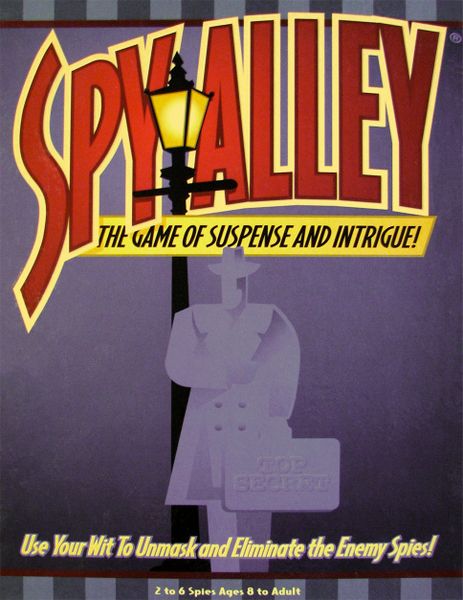Spy Alley (1992) Board Game
Spy Alley is a classic board game that was released in 1992 by William Stephenson. It is a bluffing game that involves players taking on the roles of spies trying to collect items from various countries while avoiding detection by their opponents.
Game Components of Spy Alley
How To Setup Spy Alley
To set up Spy Alley, each player is given $10 times the number of players, a scorecard, and a playing piece, which is placed on the start space. The spy I.D. cards are shuffled, and each player randomly draws one to determine their secret identity. The move and gift cards are shuffled and placed into separate draw piles. Players roll the die, and the player with the highest roll starts the game.
Gameplay Mechanics and Game Objective
Mechanics
Game Objective
Gameplay Mechanics
Player Experience
Playing Spy Alley is an engaging and suspenseful experience that requires a mix of strategy, deduction, and bluffing. Players need to carefully balance collecting necessary items without revealing their secret identity, making it a game that appeals to both children and adults. The game encourages social interaction and strategic thinking, making it a fun and immersive experience for all players.
Pros
Cons
Personal Thoughts on Spy Alley
Spy Alley is a game that is perfect for those who enjoy a blend of strategy, suspense, and social interaction. It is ideal for families, as it is easy to learn and fun for all ages. The game’s ability to develop skills such as deduction, reasoning, and logic makes it a valuable addition to any game collection. For those who enjoy games like Clue and Monopoly but are looking for something with a unique twist, Spy Alley is an excellent choice. However, it may not be the best fit for players who prefer games with less luck involved or those who are easily frustrated by the risk of early elimination.
We are supported by our audience. When you purchase through links on our site, we may earn an affiliate commission, at no extra cost for you. Learn more.

